State and Current Trends in the Development of the Social Service System in Russia
Abstract
:1. Introduction
1.1. Budgetary Sector
- (1)
- Authorized federal executive body
- (2)
- Organization of social services under the jurisdiction of the federal executive body
- (3)
- Authorized body of a constituent entity of the Russian Federation
- (4)
- Organization of social services of a constituent entity of the Russian Federation
- (5)
- Authorized organizations
1.2. Non-Profit Non-Budgetary Sector
- (1)
- Non-governmental non-profit social service organizations, including socially oriented non-profit organizations providing social services
- (2)
- Non-governmental commercial social service organizations
- (3)
- Individual entrepreneurs providing social services
1.3. The Social Service System Includes
- (1)
- the federal executive body responsible for the development and implementation of state policy and legal regulation in the field of social services (authorized federal executive body);
- (2)
- the government body of the constituent entity of the Russian Federation, authorized to exercise the powers provided for by FZ-442 in the field of social services on the territory of the constituent entity of the Russian Federation (authorized body of the constituent entity of the Russian Federation), including the recognition of citizens in need of social services, drawing up an individual program for the provision of social services;
- (3)
- social service organizations under the jurisdiction of federal executive bodies;
- (4)
- social service organizations under the jurisdiction of the constituent entity of the Russian Federation (social service organizations of the constituent entity of the Russian Federation);
- (5)
- non-governmental (commercial and non-commercial) social service organizations, including socially oriented non-commercial organizations that provide social services;
- (6)
- individual entrepreneurs providing social services;
- (7)
- organizations that are under the jurisdiction of the authorized body of the constituent entity of the Russian Federation and which, in accordance with this Federal Law, are empowered to recognize citizens in need of social services and draw up an individual program in the territories of one or several municipalities (authorized organizations).
2. Data and Method
3. Conclusions and Policy Implications
Author Contributions
Funding
Institutional Review Board Statement
Informed Consent Statement
Data Availability Statement
Conflicts of Interest
| 1 | The following formula was used: , where —number of citizens receiving social services; —the number of citizens on the waiting list for social services. |
References
- Bashkatov, B. I., ed. 2002. Socio-Economic Statistics: Textbook for University Students Studying in the Specialty 061700 “Statistics” and Other Econom. Specialties. Moscow: UNITI, p. 71. [Google Scholar]
- Biryukov, A., D. A. Dombrovsky, and E. E. Komarovskaya. 2017. Reform of Public Sector Institutions: Preliminary Results and New Challenges [Text]. Edited by A. M. Lavrov and O. K. Yastrebova. Moscow: National Research University Higher School of Economics, Faculty of Social Sciences, Department of State and Municipal Administration. [Google Scholar]
- Gluschenko, K. P. 2017. ‘Williamson’s Fallacy’ in Estimation of Inter-Regional Inequality. Estimation of Inter-Regional Inequality (20 November 2015). MPRA Paper. pp. 1–39. Available online: https://www.researchgate.net/publication/317237016_’Williamson’s_Fallacy’_in_Estimation_of_Inter-Regional_Inequality (accessed on 17 January 2022).
- Glushchenko, K. P. 2015. On the assessment of interregional inequality. Spatial Economics 4: 39–58. [Google Scholar]
- Malkina, M. Yu. 2015a. Study of the factors of interregional convergence/divergence in real incomes and “social well-being” of Russian regions. Journal of Economic Regulation 6: 111–19. [Google Scholar] [CrossRef]
- Malkina, M. Yu. 2015b. Investigation of factors of interregional convergence/divergence of real incomes and “Social welfare” of the regions of the Russian Federation. Journal of Economic Regulation (Issues of Economic Regulation) 6: 113. [Google Scholar]
- Shorokhova, I. S. 2015. Statistical Methods of Analysis: [Textbook. Manual]. Edited by I. S. Shorokhova, N. V. Kislyak and O. S. Mariev. Urals/Federer: Ministry of Education and Science Ros. Federation. Yekaterinburg: Publishing house in the Urals University, p. 82. [Google Scholar]
- Tavokin, E. P. 2020. Features of social policy in modern Russia. Sociology International Journal 4: 183–87. [Google Scholar] [CrossRef]
- Williamson, Jeffrey G. 1965. Regional inequality and the process of national development: A description of patterns. Economic Development and Cultural Change 13: 1–84. [Google Scholar] [CrossRef]
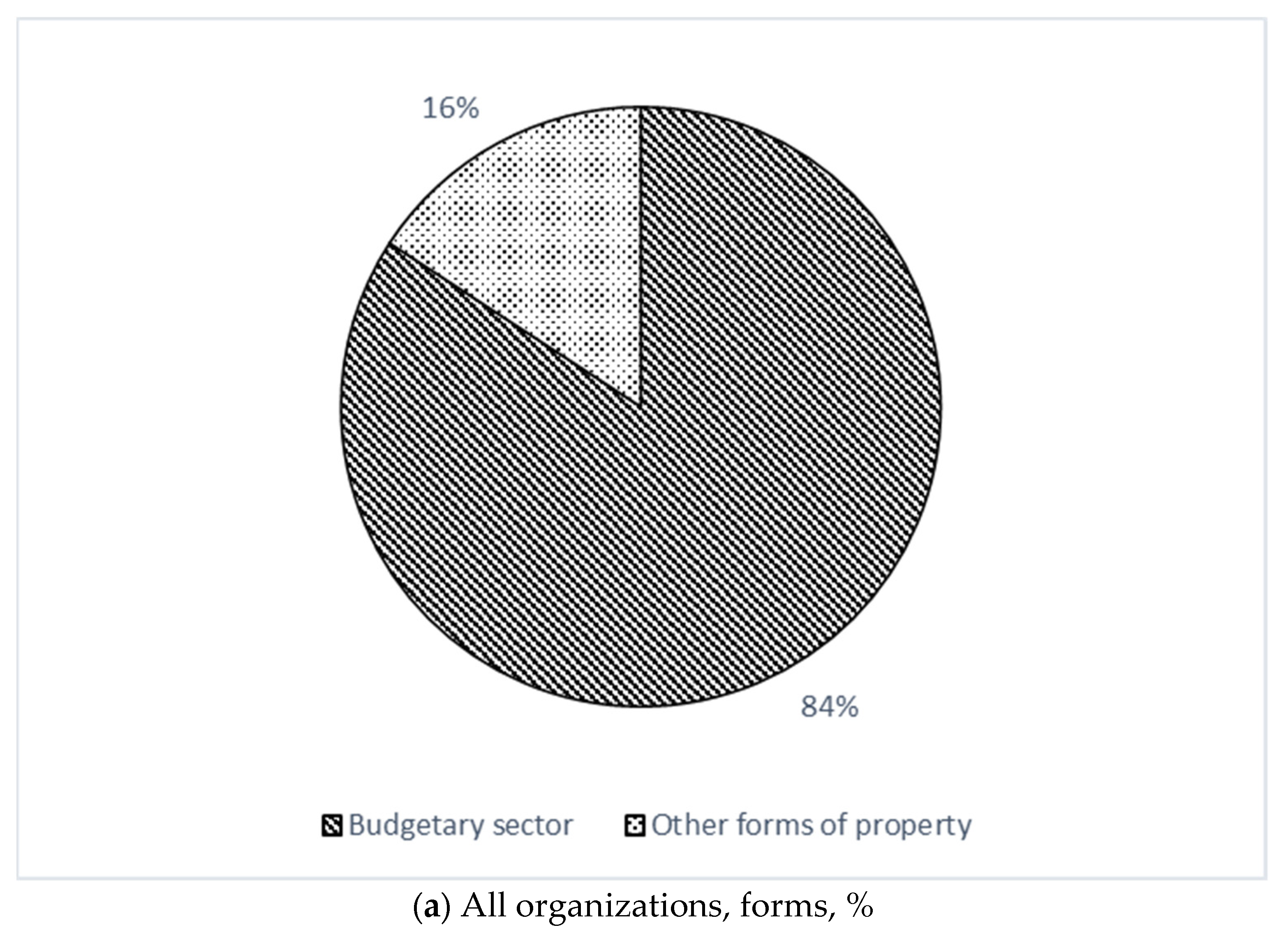
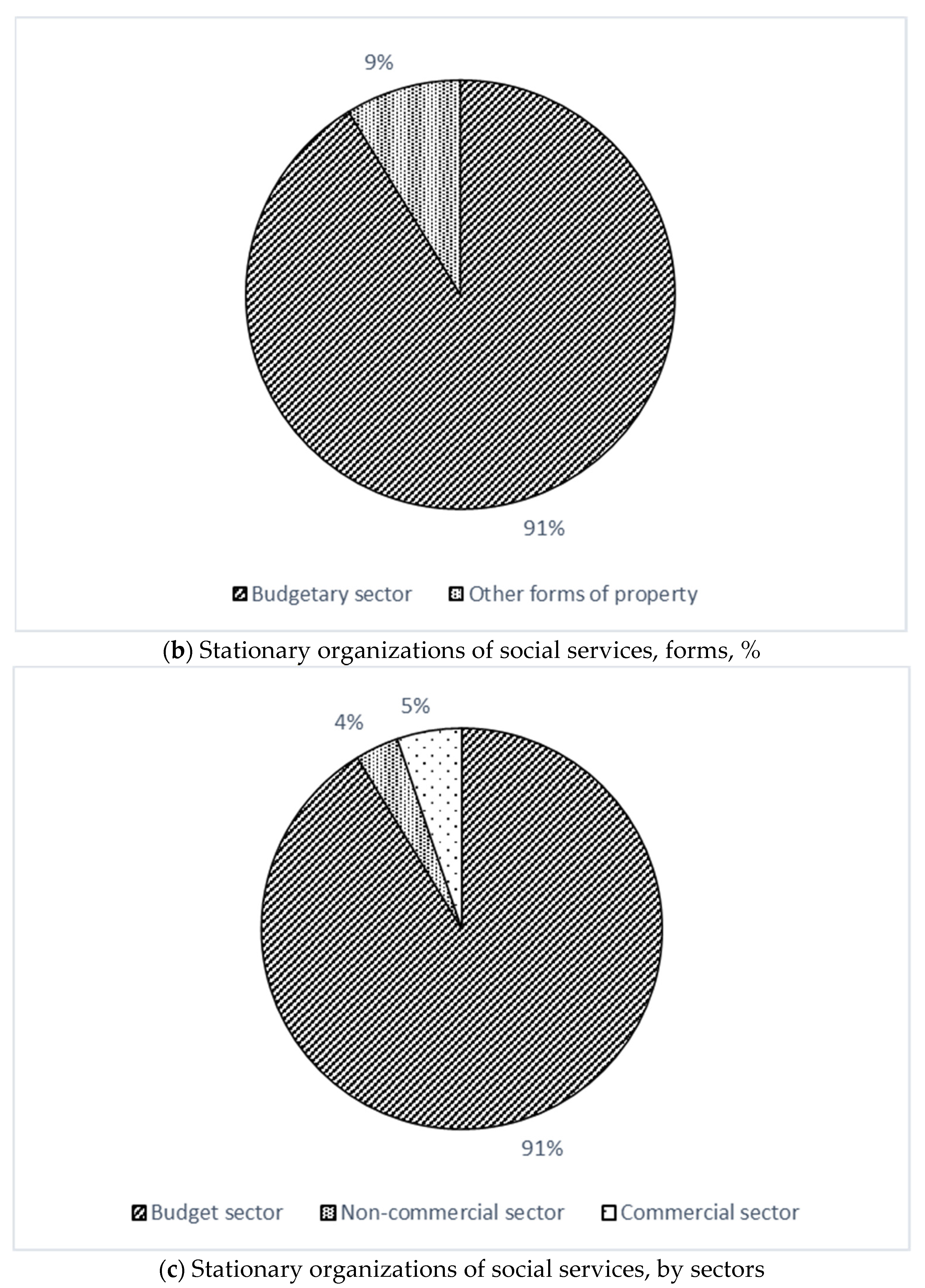
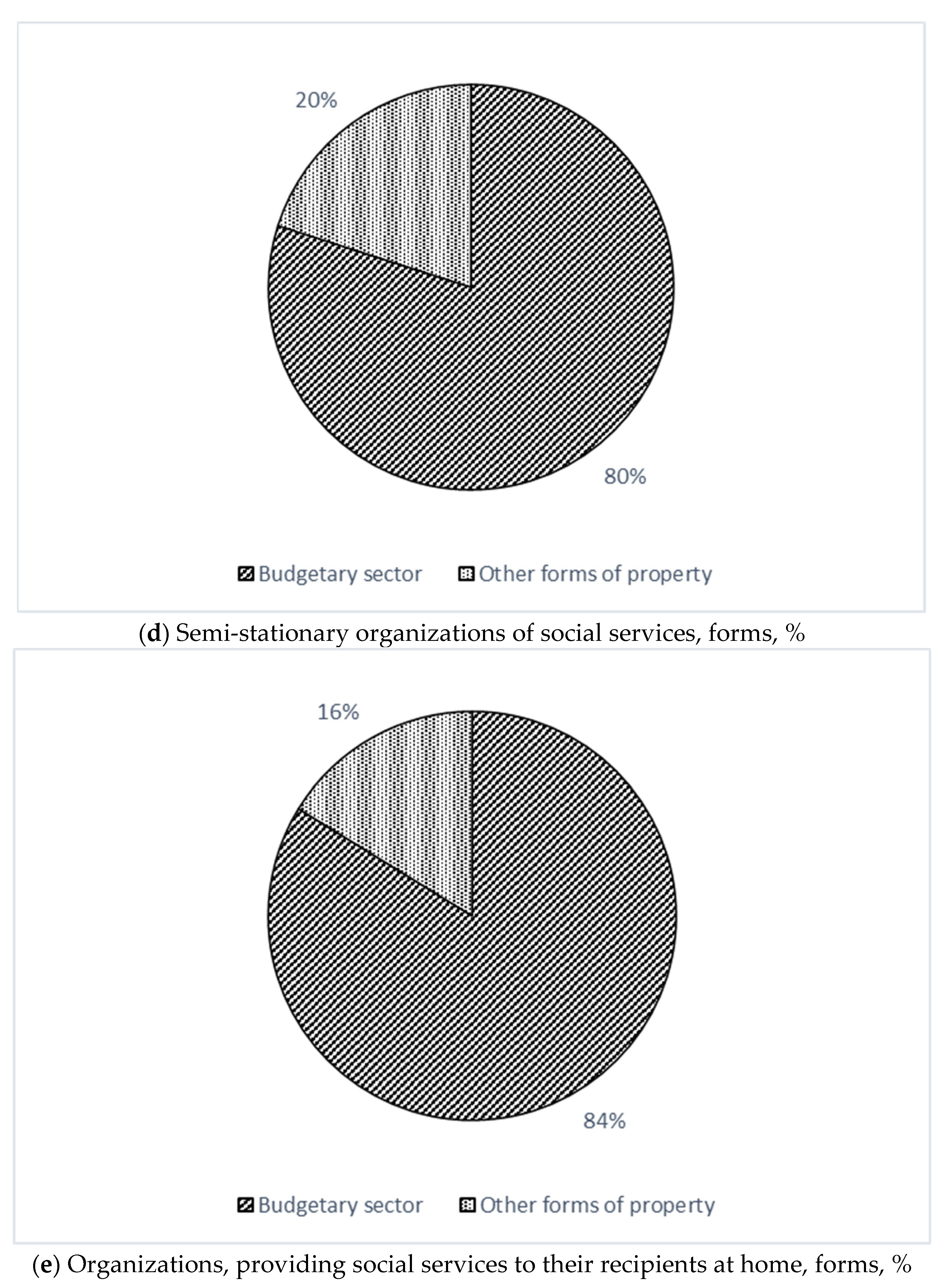
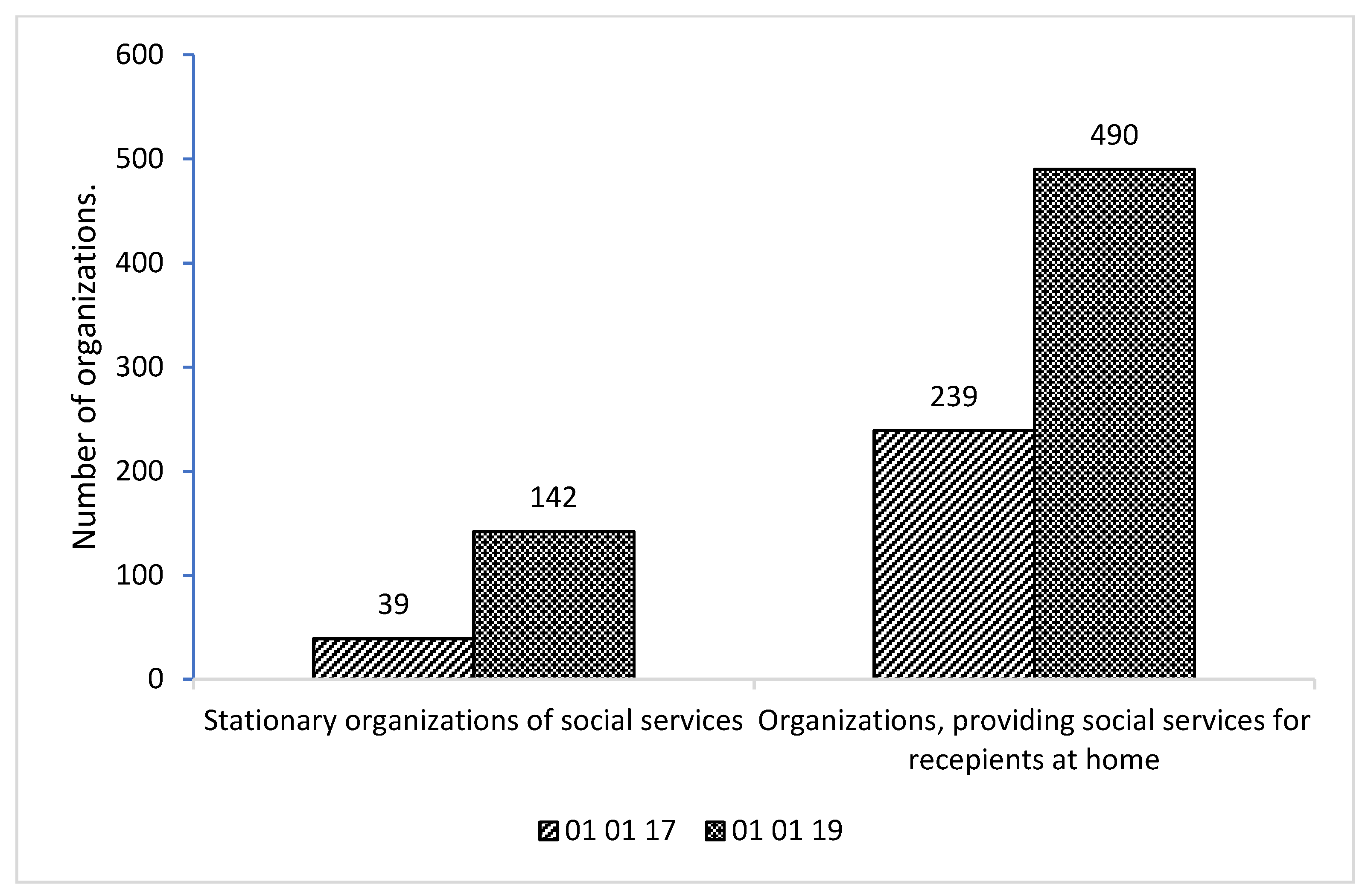
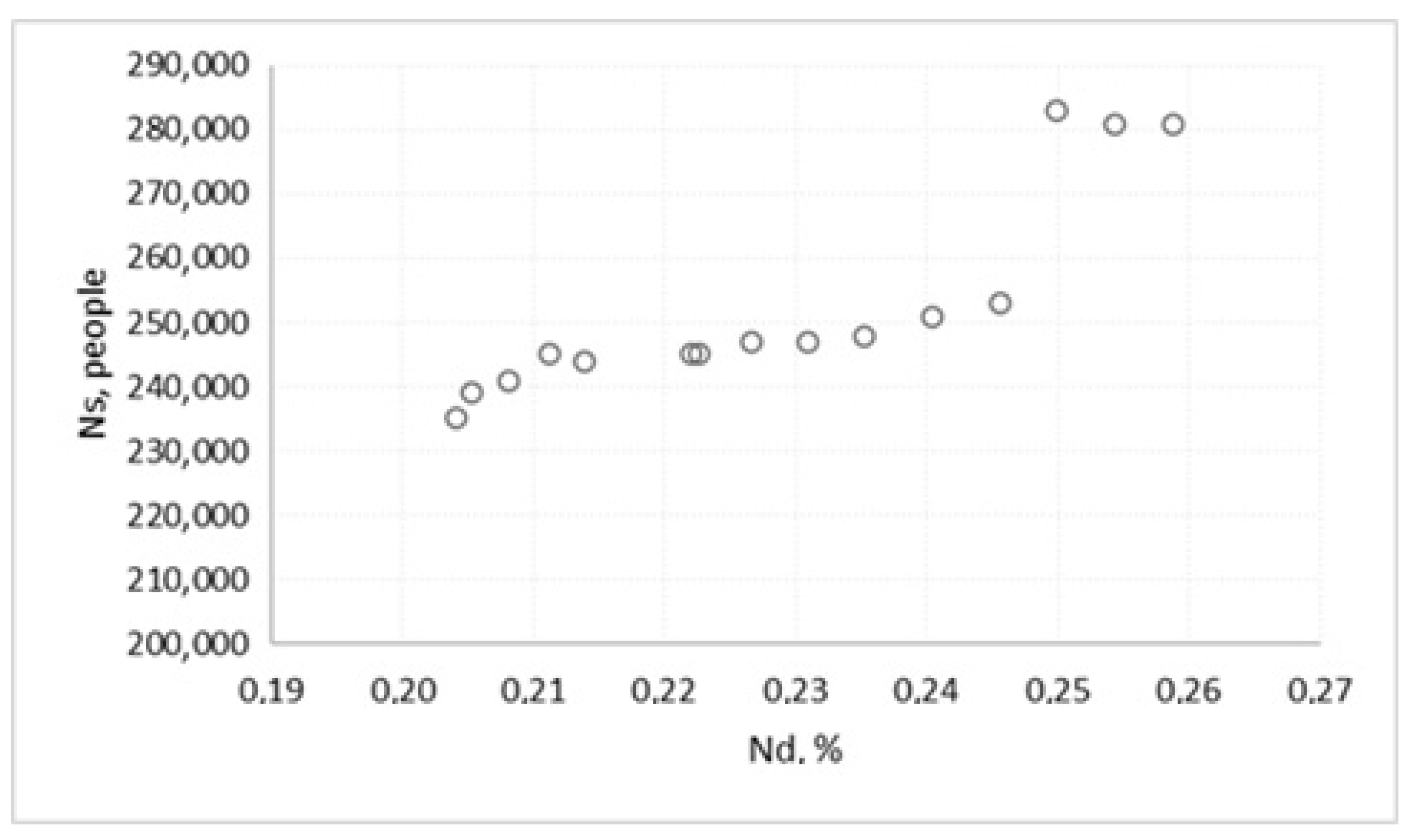
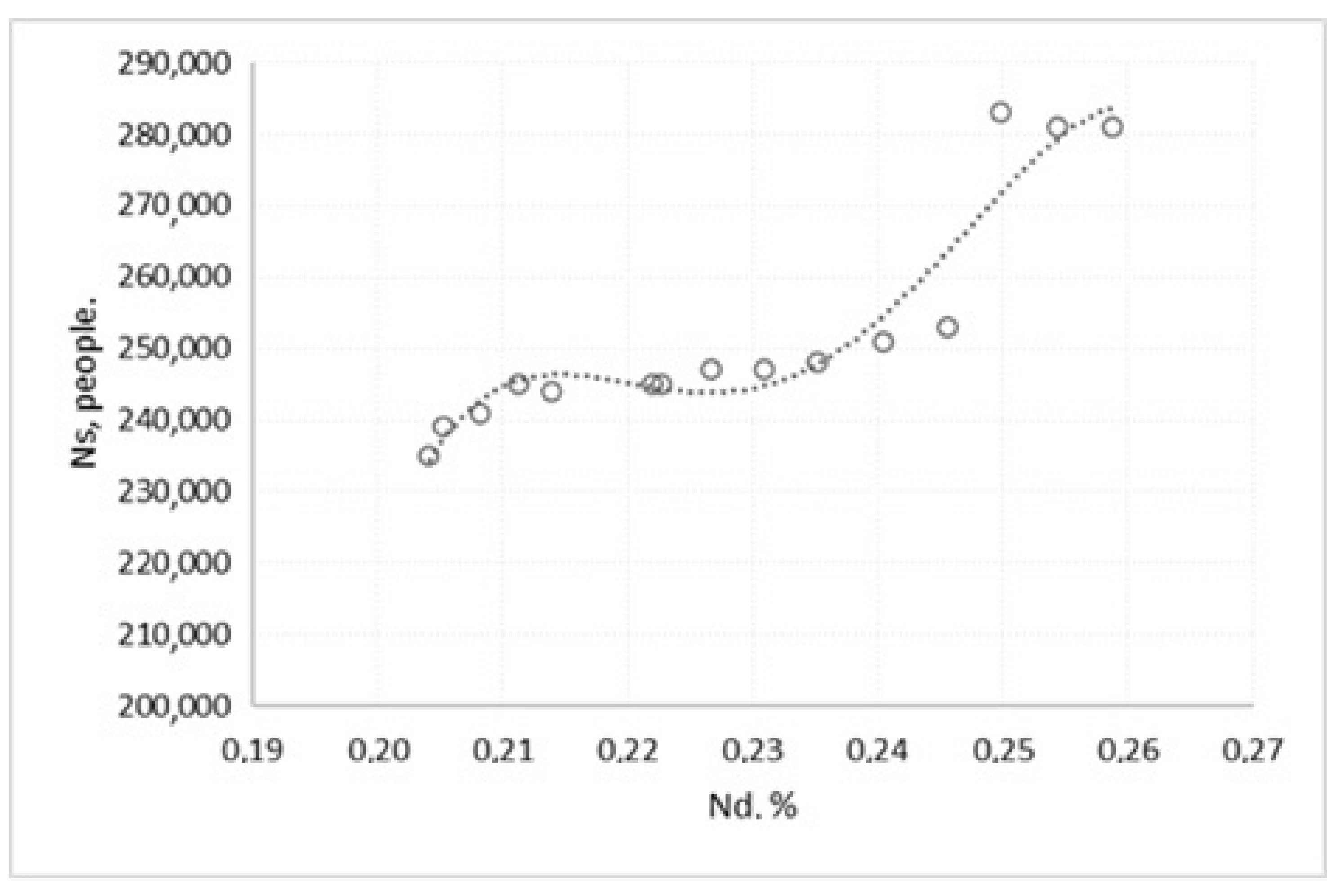
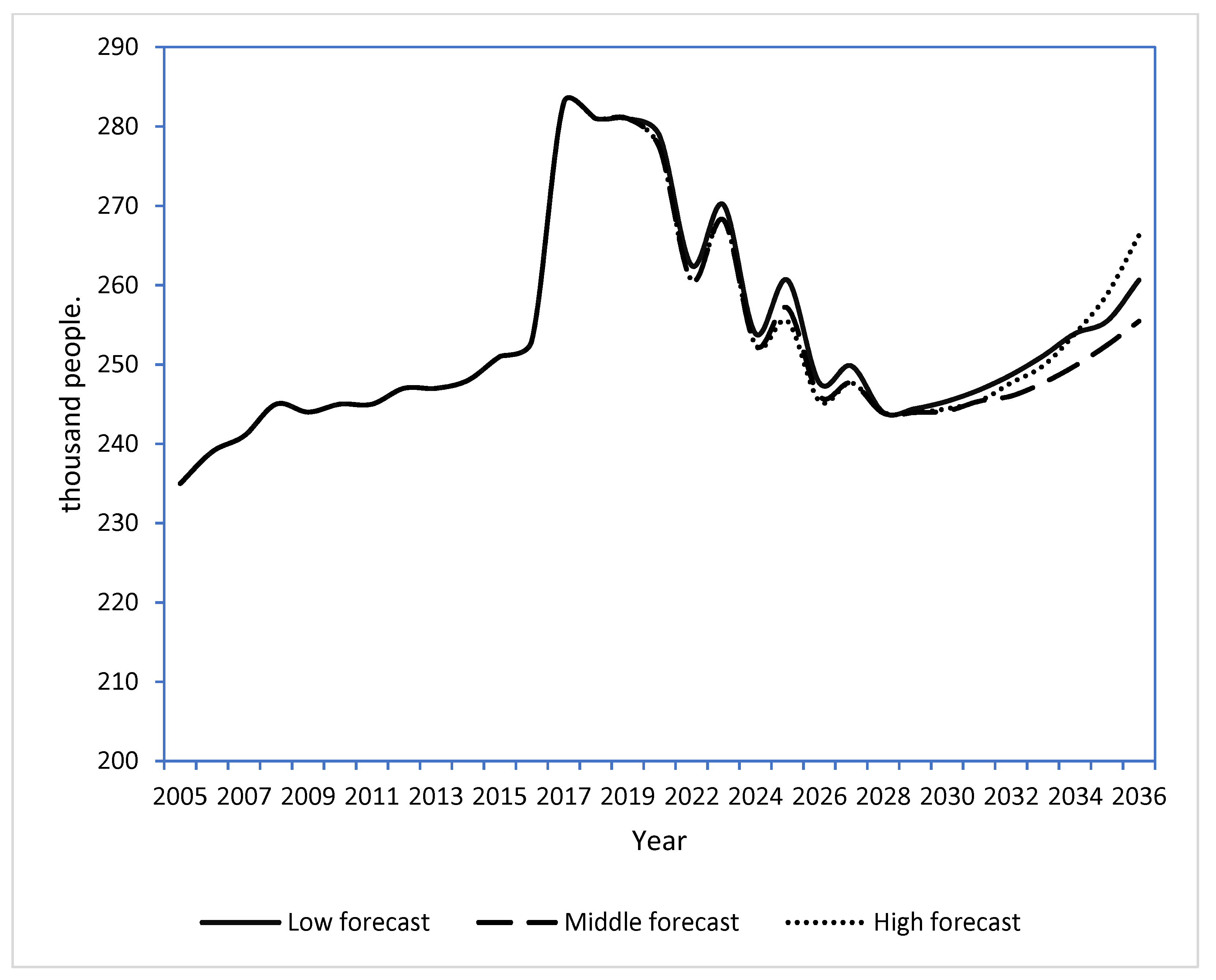
| Indicator Name | 2016 | 2017 | 2018 | 2019 | ||
|---|---|---|---|---|---|---|
| The number of recipients of social services, total, people | including. | stationary form of social service | 253,382 | 326,502 | 320,342 | 316,169 |
| social service at home | 1,178,596 | 1,176,726 | 1,179,680 | 1,182,633 | ||
| Average capacity of social service organizations, total | including. | stationary form of social service | 201 | 186 | 191 | 193 |
| semi-stationary form of social service | - (1) | - | 97,420 | 99,900 | ||
| social service at home | - | - | 269,219 | 275,240 | ||
| Average salary of key personnel, rubles | including | social service at home | 21,601 | 25,654 | 33,113 | 35,180 |
| Load on the main personnel, people/1 work. | including. | stationary form of social service | 1.35 | 1.91 | 3.15 | 1.69 |
| social service at home, total | 8.1 | 8.4 | 7.8 | 8.0 | ||
| Including social workers | 8.0 | 8.3 | 11.2 | 11.6 | ||
| Number of employees, people | including. | stationary form of social service | 187,078.25 | 171,096 | 101,852 | 186,826 |
| semi-stationary form of social service | 90,257 | 90,030 | 92,150 | 94,657 | ||
| social service at home | 167,360 | 162,398 | 151,337 | 147,544 | ||
| Indicator Name | 2016 | 2017 | 2018 | 2019 | |
|---|---|---|---|---|---|
| Coverage of social services for elderly and disabled citizens, per 10,000 population aged 60 and over and disabled, number | stationary form of social service | 85.0 | 107.1 | 102.6 | 98.8 |
| social services at home | 395.6 | 386.1 | 377.8 | 369.5 | |
| Satisfaction of the demand for social services, %1 | 96.5 | 97.3 | 97.2 | 97.2 | |
| The number of social beds per 10,000 population aged 60 and over and people with disabilities, number | 86 | 95 | 92 | 89 | |
| The number of social workers per 10,000 population aged 60 and over and disabled, number | 56 | 53 | 48 | 46 | |
| The ratio of the wages of a social worker and the subsistence minimum of the able-bodied population, times | 2.20 | 2.54 | 3.22 | 3.23 | |
Publisher’s Note: MDPI stays neutral with regard to jurisdictional claims in published maps and institutional affiliations. |
© 2022 by the authors. Licensee MDPI, Basel, Switzerland. This article is an open access article distributed under the terms and conditions of the Creative Commons Attribution (CC BY) license (https://creativecommons.org/licenses/by/4.0/).
Share and Cite
Shestakov, M.A.; Smirnov, V.M.; Danilina, M.V. State and Current Trends in the Development of the Social Service System in Russia. Economies 2022, 10, 32. https://doi.org/10.3390/economies10020032
Shestakov MA, Smirnov VM, Danilina MV. State and Current Trends in the Development of the Social Service System in Russia. Economies. 2022; 10(2):32. https://doi.org/10.3390/economies10020032
Chicago/Turabian StyleShestakov, Maxim A., Vladimir M. Smirnov, and Marina V. Danilina. 2022. "State and Current Trends in the Development of the Social Service System in Russia" Economies 10, no. 2: 32. https://doi.org/10.3390/economies10020032
APA StyleShestakov, M. A., Smirnov, V. M., & Danilina, M. V. (2022). State and Current Trends in the Development of the Social Service System in Russia. Economies, 10(2), 32. https://doi.org/10.3390/economies10020032






